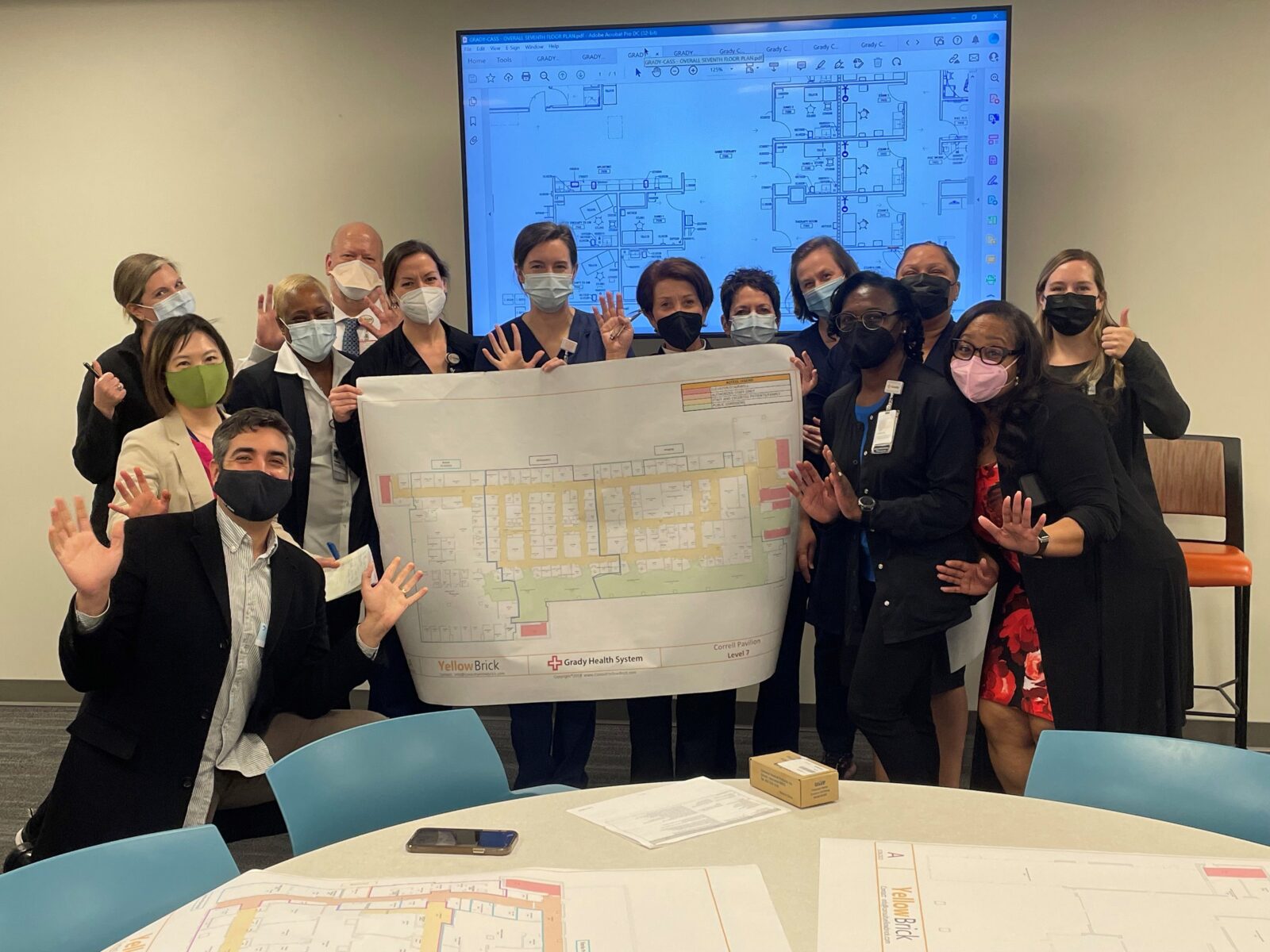By: Jonathan Ahmadi
At Yellow Brick, we are often on the road, collaborating with our clients and helping to facilitate dress rehearsals, department moves, and building activations. One of the many perks of traveling is getting to meet new people, which can happen in many different ways, including chatting with random neighbors on flights. After striking up a conversation, the most common question I get is, “What do you do for work?”
The Transition and Activation process can be hard to explain, especially for people that don’t work in healthcare. We usually spend time with clients at the beginning of a project to present and explain our process for transition planning. On a plane, I typically say we help to open new hospitals and clinics. In both instances, you can almost see the wheels start turning, and the usual response is, “Wow, that sounds like a lot of work.”
They’re right, it IS a lot of work, and it would be impossible to do it without the partnerships we forge with the many client stakeholders we engage with along the process. Stakeholders are vital to the success of a project, particularly on large-scale projects, where there are many interdependencies for ensuring scopes of work are completed and ultimately that the facility activates on time. Below is a summary of some of the key stakeholder groups on a project and how best to engage with them through the project’s lifecycle.
Putting coalitions in place that consist of various stakeholders is often times crucial to a successful change management implementation. – Hendrith Vanlon Smith Jr
Facility Project Team
No matter the scale of the project, we always have a core project team on the client side that we are most heavily engaged with. This core project team is typically comprised of an executive sponsor, project managers, c-suite team members, and administrative support. They help keep us apprised of project milestone changes and help coordinate the many meetings and events we facilitate.
Engagement Recommendations: Schedule regular meetings with this team and ensure consistent and continuous communication throughout the project lifecycle. Establish a regular reporting structure to share key performance data, risks, and escalation points.
Committee Members
We will also have a core group of stakeholders who make up most of our transition planning committee members. This group is usually comprised of department directors, unit managers, and some department champions. We often meet with this group monthly, and they tackle most of the tasks required to activate a new hospital or clinic successfully.
Engagement Recommendations: It is vital to keep the group informed regularly. This group is responsible for taking information back to the broader audience, so providing communication through established mediums is recommended. Slide presentations, look-ahead tools, and dashboards are excellent methods to keep this team apprised of the project’s status.
Frontline Staff
At different phases of a project, we also work with frontline staff. We work with nurses, therapists, providers, techs, clerks, and many others as we help them plan for all the new and different ways they will accomplish their day-to-day jobs in a new environment. These stakeholders participate in our Tabletop Exercises, Dress Rehearsal events, and activation planning.
Engagement Recommendations: This group of stakeholders often depends on receiving information from the project from other sources. We recommend that the Transition Team be the one source of truth for project updates and decisions. Townhalls are an excellent opportunity to broadcast information to the end-users of the new facility. These sessions present decisions and need-to-know information about project milestones and also provide an opportunity for end-users to ask questions.
Partners and Other Vendors
Given the large-scale effort required to activate a new healthcare facility, we often are partnering with other firms and organizations brought on by the healthcare facility to support the project. Our relationship management with the owners’ representatives, equipment and furniture planners, and department move companies ensures we can collaborate to achieve a common goal.
Engagement Recommendations: Schedule regular meetings with these teams to communicate your team’s priorities and also understand theirs. Assess upcoming milestones and track risks together to understand the impact on the project.
The truth is, we couldn’t do this work without all of the stakeholders we work with. Our team is always impressed by the graceful balancing act teams must manage while maintaining operations and planning for a new facility. Our best advice is to ensure you always account for all the teams required to activate a new facility and build them into your overall communications plan.

